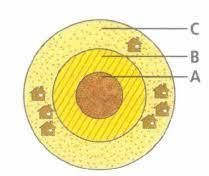Test: Biodiversity & Conservation (NCERT) - NEET MCQ
20 Questions MCQ Test - Test: Biodiversity & Conservation (NCERT)
The reason behind conserving biodiversity have been grouped into which of the following categories?
'Broadly utilitarian' argument for the conservation of biodiversity does not include
In a national park, protection is provided to
Presently, total number of biodiversity hotspots in the world is
Presently india has ____ biosphere reserves_____national park and ___wildlife sancturies
India relishes a history of relishes a history of religious and culture traditions which emphasised the protection of nature. In many cultures, tracts of forest were set aside, all the trees and wildlife within were venerated and given total protection. Such areas are refferred to as
What is the name of the species whose population has been reduced to a critical level?
Which of the following statements regarding biodiversity hotspots are incorrect?
(i) High endemism
(ii) High level of species richness
(iii) Total number is 34 in the world
(iv) Five of these occur in India
(v) High alien species invasion
(vi) Cover less than 2% of the earth's land area, but if properly conserved, they can reduce extinctions by about 30%
The narrowly utilitarian arguments for biodiversity conservation include which of the following from the given list?
(i) Industrial products like dyes, lubricants
(ii) Ecosystem services like photosynthesis
(iii) Pollinators layer of bees, birds and bats
(iv) Firewood, fibre and construction material
(v) The aesthetic pleasure of walking through thick woods
(vi) Products of medicinal importance
(vii) Watching spring flowers in full bloom
Ex situ conservation is used for the conservation of
Which of the following is not an example of in situ conservation?
Which of the following is not included under in situ conservation?
'Which of the following is not an objective of Convention of Biodiversity?
First 'Earth Summit' for Convention on Biological Diversity' (CBD) was held at
What is considered as the rivet in the ‘Rivet popper hypothesis’?
Refer to the given figure representing different zones of a biosphere reserve.

Choose the correct answer as per the statements given below:
(i) Limited human activity is allowed such as for research and education.
(ii) An active co-operation occurs between reserve management and local people for activities like cropping, settlements, etc.
(iii) No human activity is allowed.
Cryopreservation is the reservation of germplasm at very low temperature of around
Biodiversity Act of India was passed by the Parliament in the year














